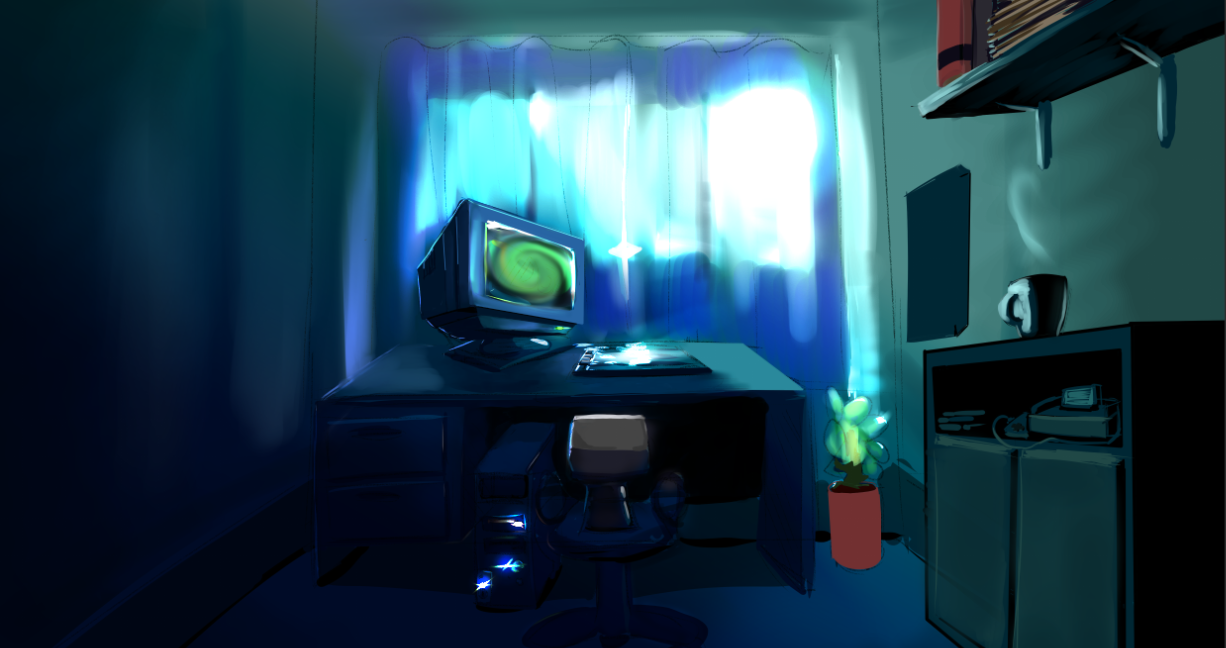Yesterday was a good day.
~Mega sits leans back in his seat, wipes his monocle, and pauses for a moment to sample the wine he has in front of him. He grimaces and hastily returns the glass to it's place on the table, and opts for his pipe instead…~Caution: Serious blog followsI sat down, thought of an abstract problem, and came up with a solution that worked. The problem is an old one: Implement a Raytracing algorithm.I've tried to follow raytracing 'tutorials' before, and even read a few documents on the subject. All of these methods only served to addle my poor brain, so I gave up on that a while back.But I know more math now.Anyways, I present here a few types of data:(Java/C# type Pseudocode, because it's readable)class Primitive;
class Sphere extends Primitive;
// Some of Sphere's members:
Sphere::position; // Vector
Sphere::radius; // Float
 I know it doesn't look impressive (Because it's not); it's missing one key feature: Lighting. But it does a remarkable job of tracing the surface of a sphere defined with only a Vector and a Scalar. (I used some fake lighting, with view-orientated falloff shading. It glitched, as you can see by the bright white spheres).Anyway, the next features I intend to implement are both Lights and Planes.A light is merely a Primitive with an intensity and color. A plane can be defined as a Vector and a Scalar (Like the sphere). Normal and Direction.As you can see, I'm still wasting my time on useless-but-mentally-stimulating projects, even in the middle of a competition~Mega stands up, and with a quick motion of his hand throws something towards you. Bending over, you notice it's a card with the words "Watch your back". When you look up, Mega is gone. Two hours later, you realize your wallet is gone too.~
I know it doesn't look impressive (Because it's not); it's missing one key feature: Lighting. But it does a remarkable job of tracing the surface of a sphere defined with only a Vector and a Scalar. (I used some fake lighting, with view-orientated falloff shading. It glitched, as you can see by the bright white spheres).Anyway, the next features I intend to implement are both Lights and Planes.A light is merely a Primitive with an intensity and color. A plane can be defined as a Vector and a Scalar (Like the sphere). Normal and Direction.As you can see, I'm still wasting my time on useless-but-mentally-stimulating projects, even in the middle of a competition~Mega stands up, and with a quick motion of his hand throws something towards you. Bending over, you notice it's a card with the words "Watch your back". When you look up, Mega is gone. Two hours later, you realize your wallet is gone too.~
Just rediscovered SIGGRAPH. Great materials there. Suggest you give them a read if you're interested in this sort of thing (Also has articles on Raycasting, and general 3D/Shader programming etc).
I forgot to mention what's going on with my game: Nothing. :PI'm kinda stuck at the moment, waiting for my mind to jump out of technical mode and back into creative mode.Pretty cool. You should try making a fancy tech-demo out of it. Maybe make an animatied sphere-dude to go with it?
@Cyrus: I fail to see how OpenCL/CUDA are going to accelerate a software buffered SDL app. >;3
@Mordi: I'm thinking of doing just that, probably in Assembly, which means it'll be a VGA demo. Why DOS? Because I can use more assembly, and get tighter speedups without the overhead of SDL/Windows.